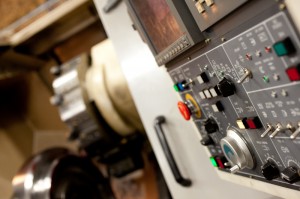Sunday, October 13, 2013
 Computer numerical control machining, or CNC machining, involves
the automatic operation of machine tools with a programmed computer. Lowrance Machine Shop uses CNC machining for higher volume projects. It’s
a technology that new machinists have often come to take for granted, forgetting that it’s only been possible for a little over half a century.
Computer numerical control machining, or CNC machining, involves
the automatic operation of machine tools with a programmed computer. Lowrance Machine Shop uses CNC machining for higher volume projects. It’s
a technology that new machinists have often come to take for granted, forgetting that it’s only been possible for a little over half a century.
Before the invention of CNC, machining was performed largely by hand, with workers repeatedly cranking a hand wheel or pulling levers. In the late 1940s, a man named John Parsons was working on the construction of helicopter blades at the Wright-Patterson Air Force Base. Frustrated by the extreme precision needed to achieve proper curvature of the blades, Parson and his colleague Frank Stulen began brainstorming ways to somehow automate the grueling process.
They came up with a primitive version of NC, which is control machining without the computer component. Their machine ran from punched cards, a now distant ancestor of modern programming methods. After forming his own company, Parsons was awarded a contract to make aircraft wings using his new method. While the machine was enormous and expensive, the Air Force was pleased with the accuracy of the product. Over the next few years, lesser complicated machines expanded upon Parsons’ initial concept. The United States Army commissioned a large quantity of the machines and distributed them to manufacturers, hoping the technology would catch on. It sure did.
In the 1960s, G-Code standardized the programming process. CAD replaced traditional paper drawings and the computing power available improved rapidly over time. Eventually, CNC machines reached a point of affordability conducive to other industries, and machine shops never looked back. While manual machining is still used for smaller, custom projects, CNC gave the machining industry a huge leap forward.
Interestingly, John Parsons was once fired from his very own company over prohibitive expenses and problems with funding. Of course, he was later reappointed president, and went on to win numerous awards and honorary degrees for his accomplishments. He died in 2007 at the age of 93.
TAGGED AS:
- cnc machining
- industry information
- machining
